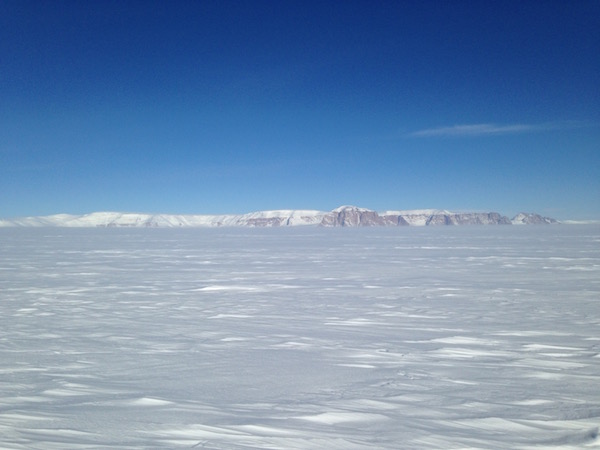Difference between revisions of "Template:Westarctica.wiki:Today's featured article"
Westarctica (talk | contribs) |
Westarctica (talk | contribs) |
||
| Line 1: | Line 1: | ||
[[File: | [[File:Horlick Mountains.jpg|300px|left]] | ||
The '''[[ | The '''[[Climate of Antarctica]]''' is the coldest on the Earth. | ||
[[Antarctica]]'s lowest air temperature record was set on 21 July 1983, with −89.2 °C (−128.6 °F) at Vostok Station in East Antarctica. Satellite measurements have identified even lower ground temperatures, down to −93.2 °C (−135.8 °F) at the cloud free East Antarctic Plateau on 10 August 2010. It is also extremely dry (technically a desert), averaging a mere 166 mm (6.5 in) of precipitation per year. On most parts of the continent the snow rarely melts and is eventually compressed to become the [[glacier]] ice that makes up the [[ice sheet]]. Weather fronts rarely penetrate far into the continent, because of the [[katabatic wind|katabatic winds]]. Most of Antarctica has an ice cap climate (Köppen EF) with very cold, generally extremely dry weather. | |||
The lowest reliably measured temperature of a continuously occupied station on Earth of −89.2 °C (−128.6 °F) was on 21 July 1983 at Vostok Station. | |||
'''([[ | '''([[Climate of Antarctica|Full Article...]])''' | ||
Revision as of 06:50, 22 April 2019
The Climate of Antarctica is the coldest on the Earth.
Antarctica's lowest air temperature record was set on 21 July 1983, with −89.2 °C (−128.6 °F) at Vostok Station in East Antarctica. Satellite measurements have identified even lower ground temperatures, down to −93.2 °C (−135.8 °F) at the cloud free East Antarctic Plateau on 10 August 2010. It is also extremely dry (technically a desert), averaging a mere 166 mm (6.5 in) of precipitation per year. On most parts of the continent the snow rarely melts and is eventually compressed to become the glacier ice that makes up the ice sheet. Weather fronts rarely penetrate far into the continent, because of the katabatic winds. Most of Antarctica has an ice cap climate (Köppen EF) with very cold, generally extremely dry weather.
The lowest reliably measured temperature of a continuously occupied station on Earth of −89.2 °C (−128.6 °F) was on 21 July 1983 at Vostok Station.
